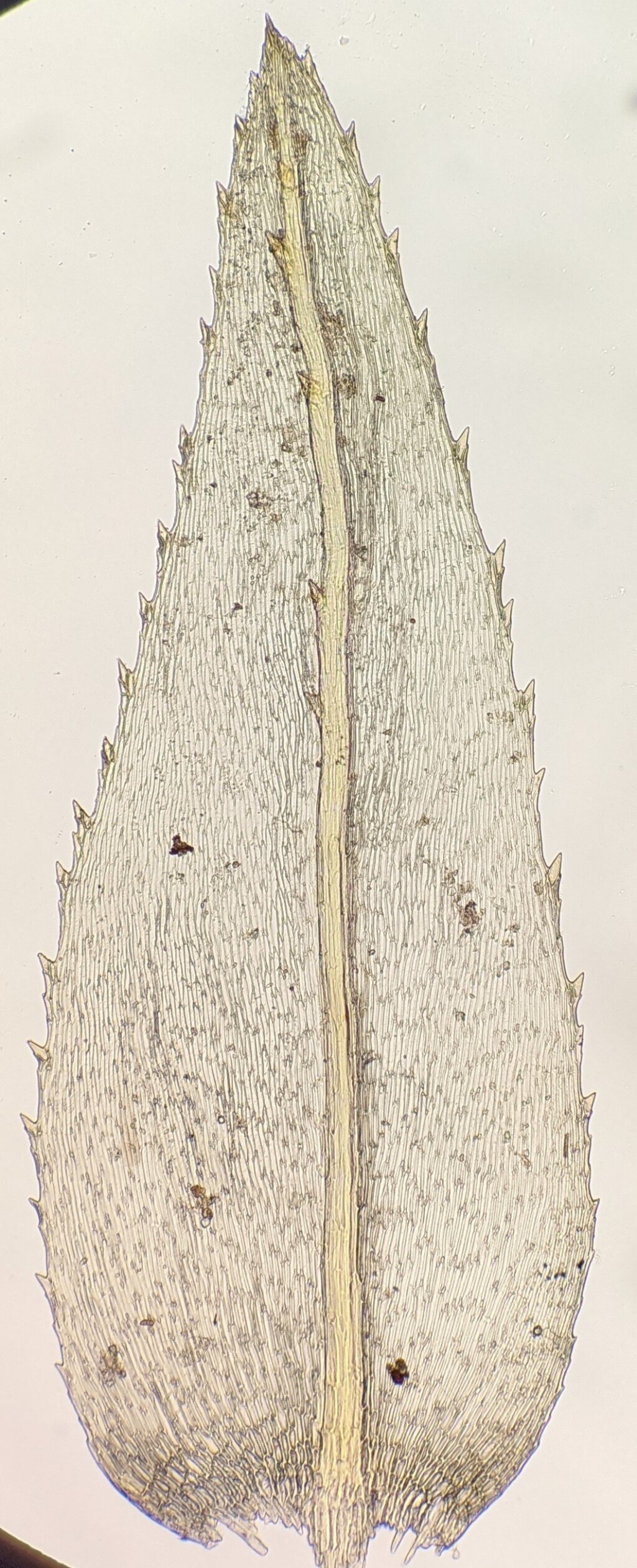Hypnodendron
Tufts on rocks, soil, logs or rarely on tree bases. Stems differentiated into basal stipe section and branched frond section. Stipes usually erect, rarely horizontal, mostly tomentose at base only, occasionally with a few scattered tufts of tomentum above, with inconspicuous appressed pseudoparaphyllia. Fronds usually oriented ±perpendicular to stipes when erect, palmate to subumbellate, occasionally pinnate or umbellate, with branches simple, pinnate or bipinnate (not in Victoria). Stipe leaves mostly appressed to spreading at around 45˚ to stem, spreading in all directions from the stem, increasing in size toward frond, cordate (not in Victoria), rounded or not or hardly narrowed at base, not decurrent. Branch leaves complanate, asymmetric, dorsal leaves smaller than spreading lateral leaves, becoming smaller toward apices. Costa subpercurrent, percurrent or excurrent as a smooth or toothed hairpoint. Margins entire to serrate, with or without paired teeth, unistratose or occasionally bistratose (not in Victoria), with a border of several rows of narrowly linear cells (not in Victoria) or without a border. Laminal cells linear, sometimes darker and with more strongly incrassate walls at margin, smooth or prorate. Alar cells indistinct or enlarged and hexagonal to rectangular; walls thin to strongly incrassate, hyaline or orange. Capsules inclined to pendent, costate to sulcate. Opercula bluntly rostrate from conic base.
Seven species distributed the the Ryukyu Islands, Vietnam, Malesia, South Pacific Islands and Argentina and Chile; two species in Victoria.
The circumscription of the Hypnodendron has undergone drastic rearrangement in response to phylogenetic analyses of chloroplast and mitochondria DNA sequence datasets (Bell & Newton 2005; Bell et al. 2007). These studies have shown that Hypnodendron as treated by Touw (1971) is rendered paraphyletic by Bescherellia Duby, Cyrtopus (Brid.) Hook.f. and Spiridens Nees. To restore monophyly to the Hypnodendraceae, the sections or groups of sections treated by Touw (1971) are now recognised as separate genera. Section Comosa (Hampe) Touw is Mniodendron Lindb. ex Kindb., section Tristichophyllum Touw is Touwiodendron N.E.Bell, A.E.Newton & D.Quandt, section Sciadiocladus (Kind.) Touw is Sciadiocladus Lindb. ex Kindb. of the family Pterobryellaceae (see Hypnodendraceae profile), sections Hypnodendron and Lindbergiodendron Touw remain as Hypnodendron, and the other sections are Dendro-hypnum Hampe.
 Spinning
SpinningBell, N.E.; Newton, A.E. (2005). The paraphyly of Hypnodendron and the phylogeny of related non-Hypnanaean pleurocarpous mosses inferred from chloroplast and mitochondrial sequence data. Systematic Botany 30: 34–51.
Bell, N.E.; Quandt, D.; O’Brien, T.J.; Newton, A.E. (2007). Taxonomy and phylogeny in the earliest diverging pleurocarps: square holes and bifurcating pegs. The Bryologist 110: 533–560.
Touw, A. (1971). A taxonomic revision of the Hypnodendraceae (Musci). Blumea 19: 211–354.

